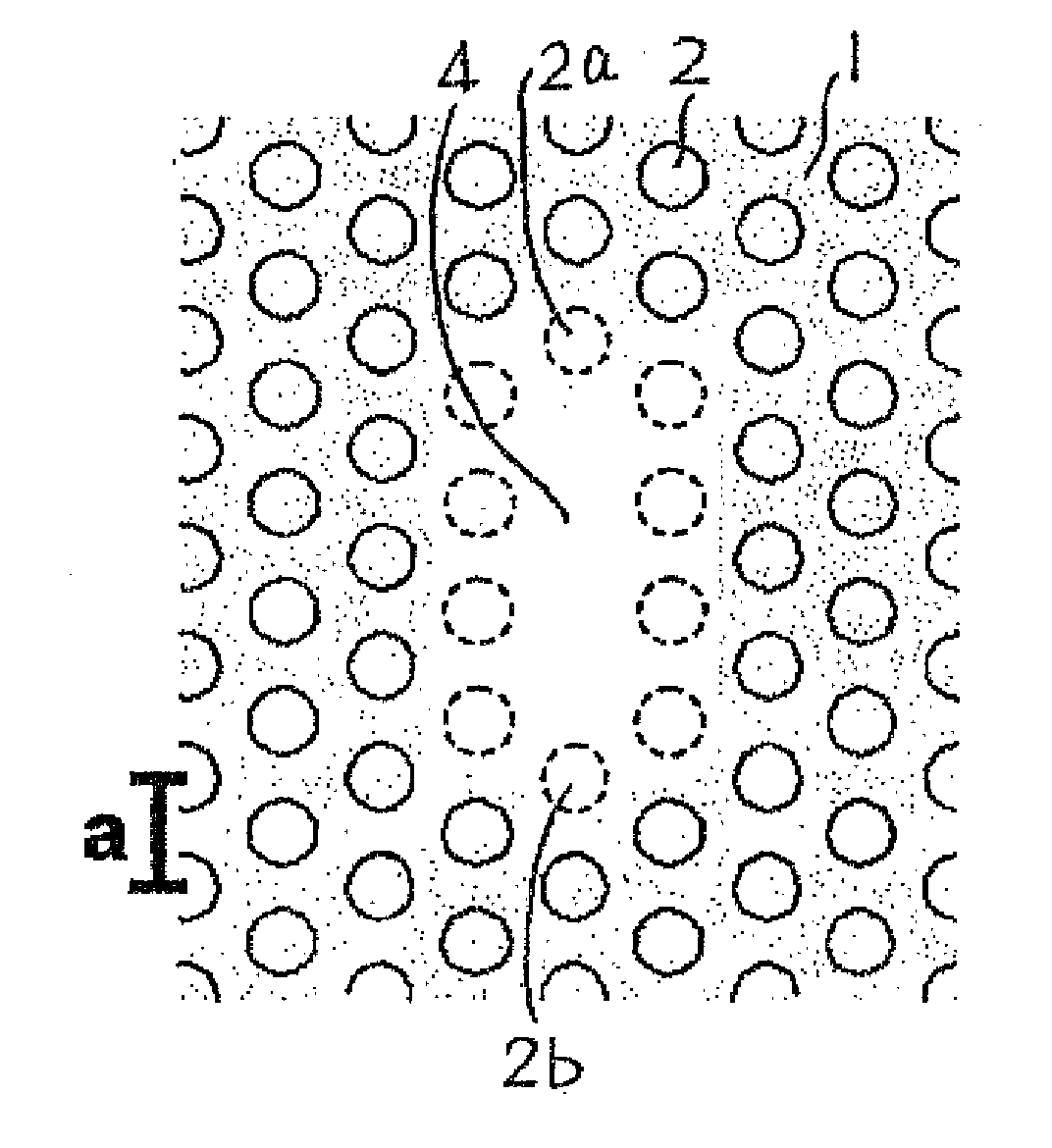Two-Dimensional Photonic Crystal Cavity and Channel Add/Drop Filter
a photonic crystal and cavity technology, applied in the field of cavities and channel add/drop filters, can solve the problems of inability to alter the cavity structure by using this technique, the q factor is large, and the cavity is totally inadequate, and achieves the effect of high wavelength resolution
- Summary
- Abstract
- Description
- Claims
- Application Information
AI Technical Summary
Benefits of technology
Problems solved by technology
Method used
Image
Examples
Embodiment Construction
[0068] Initially the present inventors looked into the characteristics, within a 2D photonic crystal, not of a cavity consisting of an acceptor-type defect as in FIG. 10, but of a cavity consisting of a donor-type point defect. As described earlier, donor-type defects contain one or more lattice points, and through-holes are missing in those lattice points.
[0069] What has chiefly been studied to date are point defects containing only a single lattice point, from the perspectives that owing to their structural simplicity they are easily analyzed electromagnetically and that they are of minimal size. This has meant that with donor types as well, point defects that contain a plurality of lattice points have not to date been studied extensively. Given the circumstances, then, the present inventors investigated the characteristics of donor-type point defects that contain a plurality of lattice points.
[0070]FIG. 11 is a schematic plan view representing a portion of a 2D photonic crystal...
PUM
 Login to View More
Login to View More Abstract
Description
Claims
Application Information
 Login to View More
Login to View More - R&D
- Intellectual Property
- Life Sciences
- Materials
- Tech Scout
- Unparalleled Data Quality
- Higher Quality Content
- 60% Fewer Hallucinations
Browse by: Latest US Patents, China's latest patents, Technical Efficacy Thesaurus, Application Domain, Technology Topic, Popular Technical Reports.
© 2025 PatSnap. All rights reserved.Legal|Privacy policy|Modern Slavery Act Transparency Statement|Sitemap|About US| Contact US: help@patsnap.com



